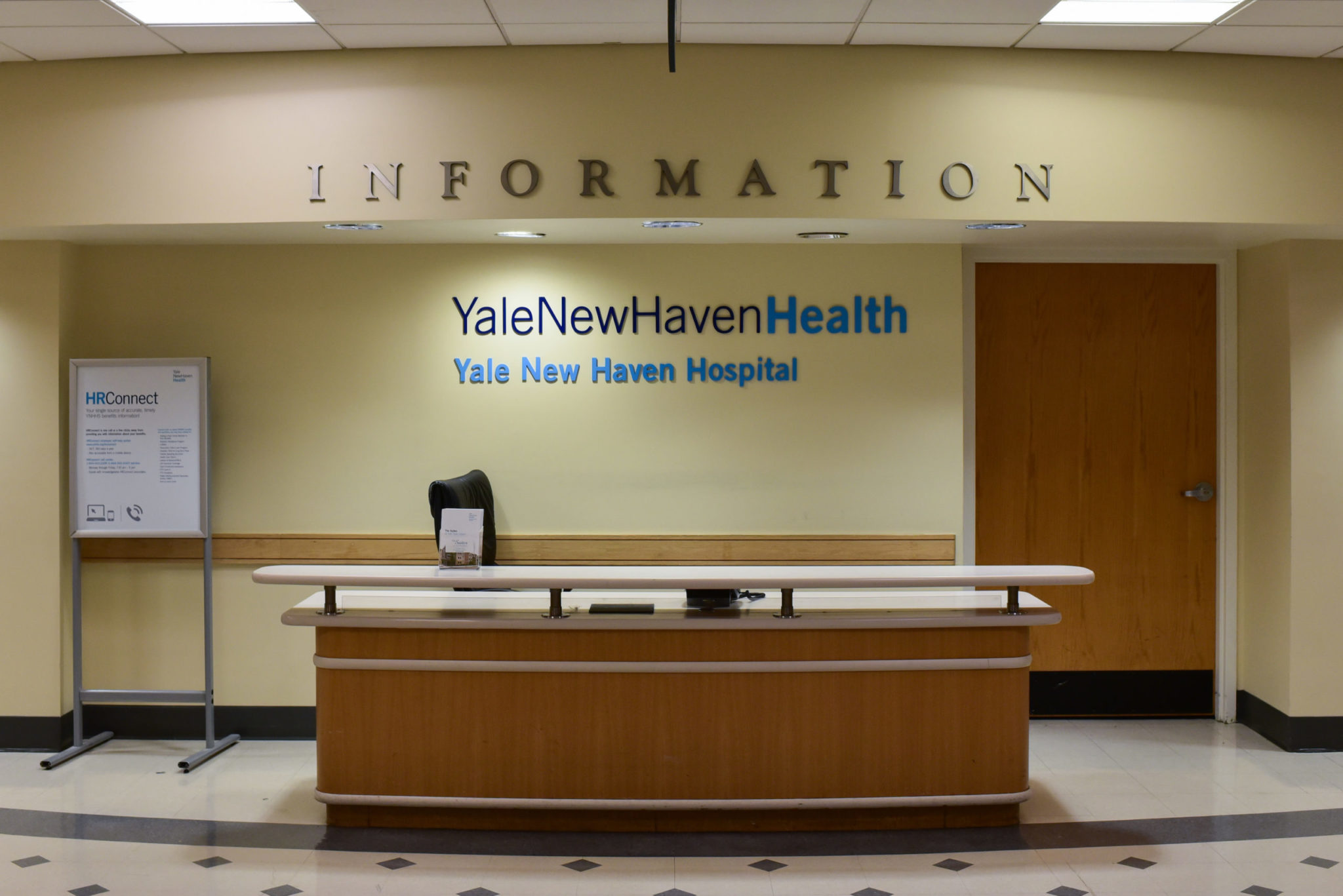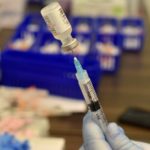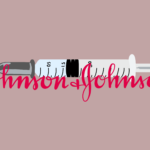COVID-19 patient volume at YNHHS down by 45 percent over last two weeks
As the Yale New Haven Health System continues to monitor breakthrough infections, noting low infection rates among the vaccinated, it has also seen a significant decrease in COVID-19 patients.

Ryan Chiao, Photo Editor
The Yale New Haven Health System has seen the number of COVID-19 patients decline by 45 percent over the last two weeks, YNHHS CEO Marna Borgstrom said at a Tuesday press conference. The trend signals a turn of the tide for pandemic hospitalizations.
While YNHHS had 132 COVID-19 patients across its hospitals two weeks ago, that number dropped to 74 as of Sept. 21. Twenty-six of these patients are currently in the intensive care unit and 22 are on ventilators. According to Borgstrom, two-thirds of all these COVID-19 patients are unvaccinated. YNHHS officials also spoke about breakthrough cases at Tuesday’s press conference and emphasized the importance of preventative measures such as social distancing, mask wearing and vaccination.
“I think that continues to show the remarkable impact that the vaccine has had and can have on people with serious disease and limiting the number of people who require hospitalization,” Borgstrom said during Tuesday’s press conference.
YNHHS Chief Medical Officer Thomas Balcezak emphasized that though the remaining one-third of admitted patients who test positive for SARS-CoV-2 are vaccinated, the overwhelming majority of them did not come to the hospital because of COVID-19. In fact, many only find out about their infection status when tested upon admission to the hospital.
In reality, breakthrough cases represent closer to 10 percent of patients who are admitted for COVID-19 at YNHHS, Balcezak said. Though numbers vary from week to week, he explained that they have been consistently “very small numbers.”
Balcezak also stressed that while breakthrough cases can happen, vaccines continue to be the best way to prevent hospitalization and death due to COVID-19 — especially in light of the Delta variant and other variants that could emerge in the future.
A recent Yale study published in the journal The Lancet, first-authored by Prerak Juthani MED ’22 SOM ’22 and led by Director of Translational Research for the Yale Pulmonary Vascular Disease Program Hyung Chun, delved into the numbers and distributions of breakthrough infections that YNHHS saw between March 23 and July 1 of this year.
“While the vaccines are highly protective with respect to the risk of death or hospitalization from COVID-19, it is clear that some of the fully vaccinated patients may develop breakthrough infections, and that the risk of severe breakthrough cases increases among older patients,” Chun wrote in an email to the News. “While we need to continue to strongly encourage vaccination for all who are eligible, it’s important to realize that no vaccine is 100% effective, and additional strategies, such as the best utilization of booster vaccines and continued social distancing and masking policies, will be important as we continue to battle this pandemic.”
Out of the 969 COVID-19 patients their team screened, only 54 were fully vaccinated and thus constituted “true breakthrough cases,” according to Juthani. Because people are only considered fully vaccinated 14 days after their second vaccine dose, these patients either first presented symptoms or tested positive for the virus after that time. The other 915 infected individuals — which account for 94 percent of these patients — were not fully vaccinated.
Another notable finding from this study was that almost one-fifth of patients who became infected with COVID-19 had received at least one dose of the vaccine, but had not completed its full course, emphasizing the importance of getting both doses.
“It is reassuring to know that, even when breakthrough infections happen, VERY few people actually end up with severe disease (ICU or even ventilation),” Juthani wrote in an email to the News. “Instead, [the] majority recover and do not tend to have as severe a hospital course.”
Better understanding of which populations are more susceptible to breakthrough infections can inform public health guidance — such as recommendations on social distancing, Juthani explained.
To that end, Chun’s team is currently conducting studies that will look into why some people get breakthrough infections when others do not.
“We are analyzing blood from patients with COVID-19 infection with severe symptoms who are either vaccinated (breakthrough) or unvaccinated,” Chun wrote. “We hope to learn from studying the blood biomarkers key differences that may be driving the disease severity that may apply to both or be unique to these cases.”
On Thursday, Sept. 23, the office of Connecticut Gov. Ned Lamont reported that the state’s COVID-19 positivity rate was 2.28 percent.










